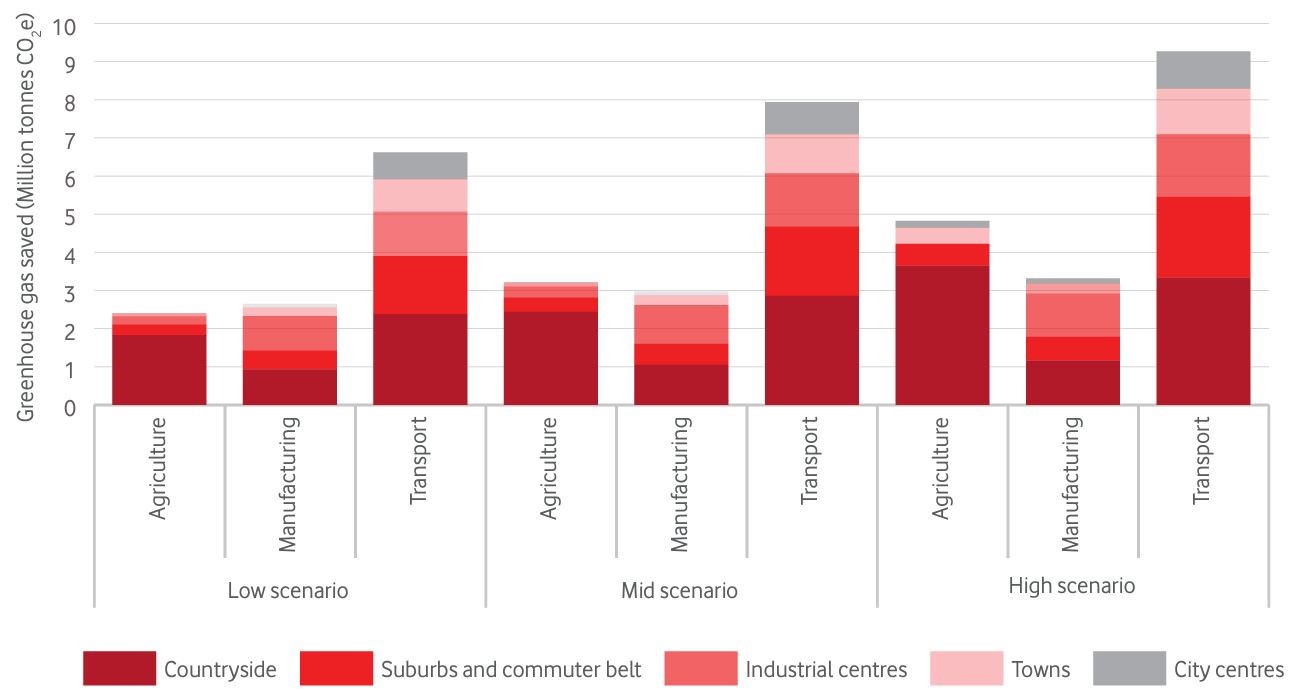
Summary Bullets:
• In a new report, Vodafone warned that current initiatives underway by the UK government are insufficient to help meet aggressive carbon emission reduction goals, including a 2035 78% reduction target.
• Vodafone and its research partner WMI Economics offered solutions designed to help jumpstart progress on these aggressive goals by deploying 5G and IoT to a host of vertical segments, notably agriculture, manufacturing, and transportation.
UK telecom operator Vodafone warned in September that the UK government has much more to do to meet aggressive emissions reduction targets that call for a 78% reduction in carbon emissions by 2035 and net zero emissions by 2020. The company believes its Internet of Things (IoT) solutions can help.
In a new report issued in conjunction with political communications consultancy WPI Economics, Vodafone pointed to slow progress in important sectors including agriculture, manufacturing, and transport where IoT could potentially deliver important progress. In these three sectors alone, Vodafone estimates that existing IoT technology has the ability to reduce between 11.7 million and 17.4 million metric tons in annual greenhouse gas emissions – at the high-end, that would represent 4% of total UK emissions, or approximately the total emissions in the Northeast of England. The benefits of IoT vary by population density – Vodafone estimates that in city centers, 87% of the benefit would come from smart transportation solutions; by contrast, agriculture would drive 38% of emission reductions in rural areas.
TOTAL POTENTIAL ANNUAL CO2 SAVINGS FROM DIGITAL TECHNOLOGY
BY SECTOR AND SCENARIO 
Source: Vodafone/WPI Economics “Connecting for Net Zero: Addressing the climate crisis through digital technology” (September 2021)
In order to fully realize these emissions reductions, Vodafone issued a call to action for the UK government. Among its recommendations:
• Set clearer targets and benchmarks for the adoption of digital technology within the company’s 2050 zero net emissions strategy.
• Incentivize adoption of IoT and 5G technologies in key sectors to accelerate emissions reductions.
• Increase the weight given to carbon reduction technologies and vendors’ internal carbon reduction targets in procurement processes.
• Expand the role of UK programs such as Digital Catapult and Connected Places Catapult that are tasked with accelerating digital technology innovation and adoption in high impact sectors of the economy.
• Allocate £500 million of public funding to regional innovation centers focused specifically on IoT and 5G applications that can reduce carbon emissions.
• Enable interoperability among solutions by introducing regulation to drive common security and data standards in IoT devices.
• Introduce a regulatory and policy framework that “creates the right signals for investment” in mobile networks across the UK.
For all the focus on the lead-up to COP26, the next annual UN climate change conference happening in Glasgow, Scotland in November, Vodafone also offers another, less altruistic rationale for focusing on 5G-based digital solutions to reduce carbon emissions: jobs. According to the September report, Vodafone estimates that 5G could add £6.3 billion to the value of UK manufacturing by 2030 and create 175,000 additional jobs across the economy.
Continue reading “Vodafone Issues 5G/IoT Call to Action to UK Government in Advance of COP26”



